Will GPU Prices Drop Soon? What To Do
Want to upgrade your gaming PC this year and wondering when the GPU prices might drop?
Buying a new GPU is high on everyone’s wishlist since 2020 but prices have steadily climbed, leaving the upgrade outside many’s budget.
So, when will GPU prices drop and what can you do in the meantime? Here is what the experts are saying.
Why Are GPU Prices So High in 2022?
It’s not that GPU prices are extremely high in 2022, it’s that they’ve increased steadily since 2021. Actually, if you are to look at some GPU prices index like the excellent guide Tom’s Hardware put together, you can see that some low-end and second-hand GPUs have actually dropped. At this point in time, at the end of 2022, buying a new graphics card can be affordable if you avoid the high-end options.
In part, the massive spike in the prices was caused by the pandemic which disrupted the supply chain. But there were more happenings to consider, including good old-fashioned greed, it seems.
First off, in many countries, throughout the lockdown, many people turned to gaming as an escape and decided they needed to upgrade their PCs. Others focused more on crypto mining, so GPUs suddenly sold like hot cakes. Add to this the inevitable scalpers and you can see why GPU prices are higher across the board. However, even GPU manufacturers took advantage of these circumstances to get record profits. Proof? In March 2022, Nvidia bragged about its rising GPU prices to their investors, pointing out that those who buy RTX 3000-series graphics cards are actually spending $300 more than the people who bought the previous generation’s high-end GPU. Not so good for us consumers, right?
Fortunately, the last couple of months have seen a slight decrease in Nvidia prices and, with AMD bringing in some welcomed competition, it might be tiome for an upgrade.
Also read: Should You Buy the New GeForce RTX 4090 or 4080? Short Summary on Performance, Specs and Pricing
When Will GPU Prices Drop?
The first signs of decline were easily observable in February and became even more obvious this March. Cards like the GeForce RTX 3080 dropped to $1,000 at some online retailers that – believe it or not – practice lower prices than even eBay.
Cards like the GeForce RTX 3080 dropped to $1,000 at some online retailers that – believe it or not – practice lower prices than even eBay.
That’s not to say eBay hasn’t felt the shift – prices of GPUs from prior generations have dropped by 12.5% in March. When you look at some GPUs individually, you’ll see they’ve dropped in average price by at least 9%.
To get an idea of where that puts you, the average eBay selling price for a GPU this spring was $983, down from $1,094 in January. When compared, AMD cards had a bigger price drop than Nvidia – 13% to 9%.
Cryptocurrency fluctuations definitely affected the GPU market but even as Bitcoins and Ethereum coins are recovering, mining profitability is still pretty low hence why GPUs should continue to go down in price.
Add to this the incoming batch of new graphic cards from AMD, Nvidia and Intel and you’ll likely see even more price drops as the companies are eager to get rid of existing inventory.
However, GPU prices fluctuating is still to be expected, especially during the holiday season.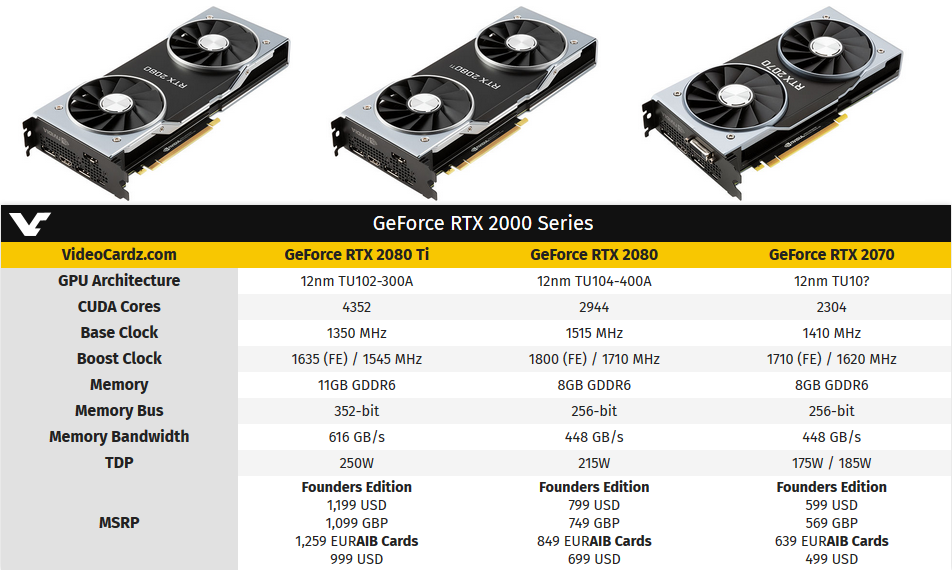 As many anticipated, Santa also brought some higher GPU prices, so November and December weren’t good months to finally put together that shiny new gaming PC. So, when should you get a new GPU?
As many anticipated, Santa also brought some higher GPU prices, so November and December weren’t good months to finally put together that shiny new gaming PC. So, when should you get a new GPU?
Our bet would be January and February. Just like most consumer items, GPU prices tend to be much lower in the beginning of the year, when people’s budgets are depleted from all the holiday spending – and some people look to make some quick cash by selling their possessions. You might get lucky and see a MSRP GPU in stores or go even lower with a second-hand model on eBay or some forums.
Take a look at this chart put together by DigitalTrends and you’ll see a slight downwards trend for Nvidia GPU prices this year.
When Will the GPU Shortage End?
The good news for gamers is miners are losing interest in GPUs. While in 2021, a lot of GPUs went directly to mining farms, this year the existing volume on the market sold to individuals is increasing, showing that there is indeed supply.
How To Check What GPU You Have
Not sure what GPU your PC has? Here are a couple of ways to find that information easily and painlessly.
- From Windows’ Device Manager. Go to Start – Device Manager and click the drop-down menu near the Display adapters. You should see your GPU straightaway. To see the manufacturer, right click on it and the details should appear in Properties. Need the model number? To check that out unfortunately, you’ll have to get physical access to your graphics card and look at the sticker on the side.
- From Windows’ Task Manager. Press Ctrl + Alt + Del and choose Task Manager. Then, in the pop-up window, go to the Performance tab and select GPU. Here you’ll also see how you’re using the GPU and its current temperature.
- From Windows’ System. Go to Start – Settings and choose System. From there, select Display and Advanced display settings. At Display information you’ll see the graphics card you have installed as well as other metrics.
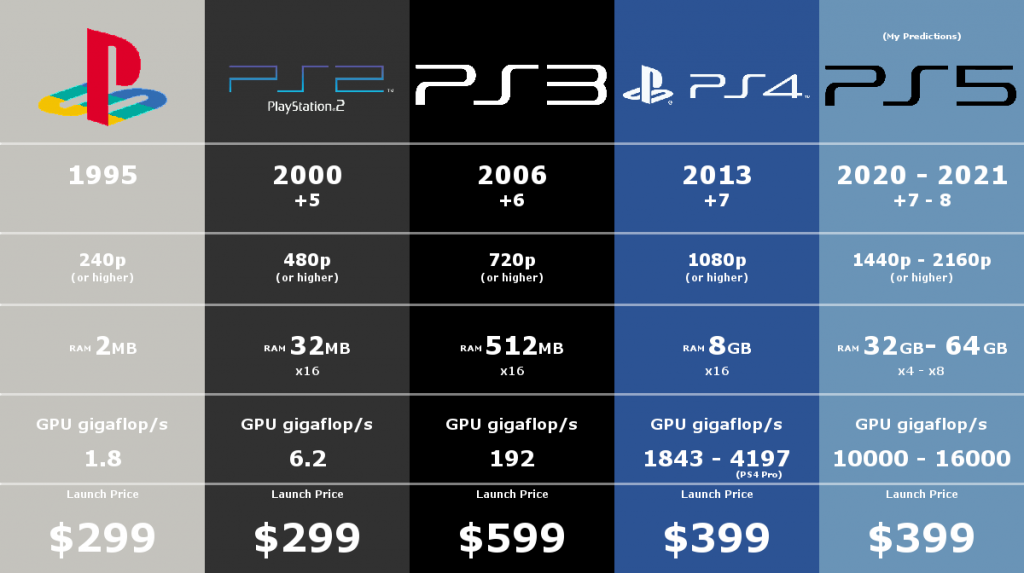
How to Overclock Your GPU
If you don’t want to wait until late spring – early summer 2023 to buy a new GPU, then you can overclock your current one.
By the way, buying a used graphics card isn’t the smartest move, even if it’s the cheapest. Well, not unless you realize the risks that come with it and you have a great understanding of the card you have and your commercially available options.
So how do you push your GPU to the max? How do you get maximum speed and better visuals from what you currently have?
You overclock it! This is a process relatively easy and safe nowadays that rarely will damage your hardware.
Here are the steps you need to take to overlock your GPU:
- First, benchmark your default performance. This will give you an idea of your starting point and help you understand what are the limits of your card in the end.
- Then, decide on an overclocking tool like MSI Afterburner or EVGAs Precision XOC or AMD Overdrive if you have an AMD card.

- Got it? Now, open it and increase the temp to the maximum and increase the power limit by, let’s say, 10% for some headroom.
- Go anywhere from + 5-50 Mhz to see if the overclocking works as it should. If you’re bold, choose +50Mhz.
- Now stress test the GPU – no artifacts? Great, you can proceed to the next step.
- Up the clock speed again and again, every time by 10Mhz, looking closely at the results you’re getting. Your game crashes or the laptop reboots? That’s the max your GPU can give. So…
- Reduce that number by 10Mhz.
- Now work on the memory – overclock it between 10-15% to really up the performance you’re getting.
- Hit a limit? Check your temp and power limit to reach the max this baby can give you. Then test again. Remember, the maximum overclock varies from graphic card to graphic card, so do a quick Google search with your GPU model and add “overclocking” as a keyword to see what others are doing.

Nvidia GeForce RTX 4090 Lovelace Leak Says Card Is “Twice As Powerful As RTX 3090”
Samsung Galaxy S22 Phones, First To Come With an AMD Ray Tracing GPU
Subscribe to our website and stay in touch with the latest news in technology.
Will GPU Prices Drop Soon? What To Do
Related Items:crypto, Featured, gpu, gpu prices, graphics card, mining, overclocking
GPU prices are plummeting. Should you buy now, or wait?
A $2,150 premium RTX 3090 Ti slashed in price by 60 percent. Almost 40 percent off lopped off the cost of a blingy RX 6900 XT. After months of painful, sky-high prices, graphics card prices are abruptly plunging, and most dramatically on the highest-end models.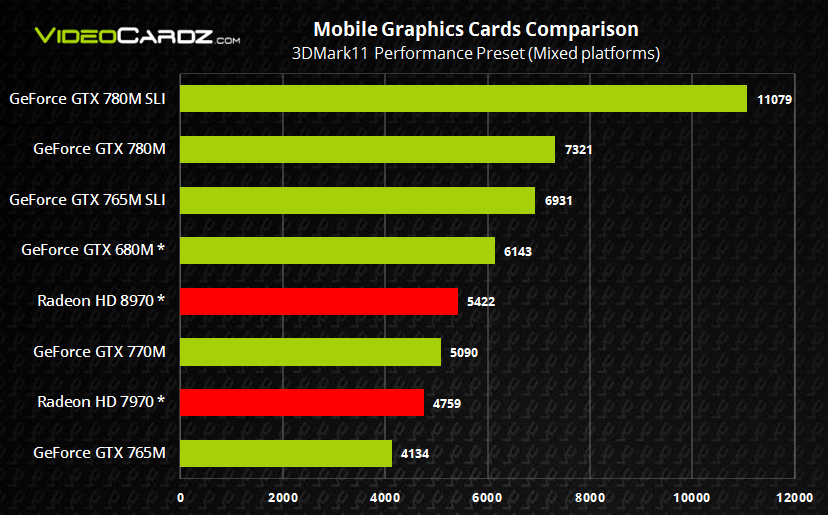
Stock is suddenly in favor of consumers, now that miners are no longer buying up all the graphics chips Nvidia and AMD produced. And looking at the final totals after these discounts, you may find yourself asking if stretching your budget could be worth it—especially if you have extra cash on hand after waiting for a reasonable price on a GPU.
It’s a question worth asking, and one we’ve discussed on The Full Nerd, our weekly show on YouTube where we discuss PC hardware. If you find yourself considering this decision, here are the other hard questions you should next ask yourself. How you answer will determine if you should keep to your original budget, stretch to buy one of these insane deals, or wait for the next generation of cards.
How long will you keep the graphics card?
It’s a bit of a running joke among the PCWorld staff at this point, but the GTX 1080 Ti has held up incredibly well over the years. Typically, enthusiasts who buy a flagship card upgrade sooner than many actually have.
Nvidia
If you replace your graphics card more often, your strategy will be different than someone who tends to buy and hold for as long as possible.
For example, if you’re someone who likes to replaces your card every couple of years, and you’re now four or five years into ownership of your current GPU, you may be feeling long past due for an upgrade now that prices are normal. Since you’ll replace the card within a couple of years, waiting longer may not sit right, even given the age of the current generation of GPUs.
the best 1080p gaming value
Radeon RX 6600 Swft 210
On the flip side, if you tend to hold onto your graphics cards until death do you part, waiting another half year for the rumored launches of Nvidia’s RTX 40-series and AMD’s RDNA3 Radeon cards Radeon cards is the more fitting decision. Holding out for the latest tech will help extend the life of your purchase.
Find yourself on the fence? How you answer the other questions will help you better clarify where you fall.
How important are next-gen features?
A shot from Chernobylite comparing DLSS, FSR, and native resolution. If you’re someone who stans FSR but wants performance closer to that of Nvidia’s DLSS 2.0, you may be better off waiting to see what next-gen cards bring.
Keith May/IDG
In the current generation of cards, AMD is a step behind Nvidia in support for ray-tracing. FidelityFX Super Resolution (FSR), its upscaling tech for improving frame rates, also still trails Nvidia’s Deep Learning Super Sampling (DLSS) tech. Depending on the games you play and monitor you have, having these features may be key to your enjoyment of the card.
The answers to the other questions in this article can better shape the path to take. Maybe a current-gen higher-end card is ideal—the graphics card you have is on its last legs or is performing too weakly for your taste, and the feature set of the RTX 30-series or RX 6000-series is more than adequate for your timeline.
the best 4k gpu
GeForce RTX 3080
Or perhaps waiting to see what comes out next is the right choice. You want to make the most of a fancy new monitor you just got, or you’re gambling despite the trend of ever-increasing MSRPs, you can buy a cheaper class of next-gen GPU and still get improved performance and features.
You want to make the most of a fancy new monitor you just got, or you’re gambling despite the trend of ever-increasing MSRPs, you can buy a cheaper class of next-gen GPU and still get improved performance and features.
Even if you don’t plan to play games on this card, features like NVENC, Nvidia’s encoder, does advance as newer architecture generations release. The newer cards can also support unexpected and extremely helpful new features, like when Nvidia released RTX Voice and its background-noise eliminating tech at the start of the pandemic. At its launch, that feature was limited to then-current-gen 20-series cards and the tensor chips only found in those RTX cards. GTX cards didn’t get support until a year later.
What games do you like to play?
If you’ve always been a “But can it run Crysis?” type, you’ll want a card that can easily handle the punishment of graphically demanding games. (Pictured: Cyberpunk 2077.)
Thiago Trevisan/IDG
Play nothing but AAA titles the second they drop? Or do you focus on less taxing indie games?
The kind of games you play also should factor into your purchase decision, even if your titles of choice are the freebies you’ve collected through the Epic Games Store.![]() Whether they punish the hardware, go easy, or somewhere in between, your usual taste will influence how much hardware you’ll reasonably need. No point in a cutting-edge version of ray-tracing or the ability to pump out high frame rates in today’s AAA titles if your games don’t require much firepower.
Whether they punish the hardware, go easy, or somewhere in between, your usual taste will influence how much hardware you’ll reasonably need. No point in a cutting-edge version of ray-tracing or the ability to pump out high frame rates in today’s AAA titles if your games don’t require much firepower.
So figure out the napkin math on the kind of hardware best suited for your habits. After, you’ll be able to make calls like, “I wouldn’t normally go for a 6900 XT, but if a good model dips below $600, I’d rather scoop that up now and hang onto it for a few years instead of waiting for prices to come down on the next-gen cards. Otherwise, I’ll hold out.”
What’s your monitor capable of?
Will you play the latest AAA games on a high-resolution screen like the Samsung Odyssey G9? After all, you could also own an Odyssey G9 and only play games like Stray on it instead.
Samsung
As fun as it is to own hardware that puts the pedal to the metal, sometimes you can’t justify owning it. For example: You own a 1080p monitor with a fixed refresh rate of 60Hz, aren’t planning to upgrade it, and will only ever game on the PC. Sure, casually mentioning you picked up a 3090 Ti for just a bit over $1,000 is a great bomb to drop in a conversation, but it shouldn’t be the main win of such a deal.
For example: You own a 1080p monitor with a fixed refresh rate of 60Hz, aren’t planning to upgrade it, and will only ever game on the PC. Sure, casually mentioning you picked up a 3090 Ti for just a bit over $1,000 is a great bomb to drop in a conversation, but it shouldn’t be the main win of such a deal.
So put another way: What are the resolution and refresh rate you normally play at? And if you’re pushing a lot of pixels or playing at high frame rates, how important is it you maintain that level of performance?
Those answers plus the kind of games you normally play will determine how powerful your graphics card should be and how long you’ll be able to hang onto it. If you play a game with relatively chill system requirements, but load it on a super ultrawide monitor (i.e., Samsung Odyssey G9) while cranking up its graphics settings to max, you may end up needing a brawnier graphics card than you might first think. Similarly, if you always need to hit at least 144 fps in the latest AAA games, you’ll be replacing your card more often.
What’s your budget?
This question is the harshest bit of reality.
Pixabay
This one’s the final reality check. If you only planned to spend $250 on a new graphics card, a reasonable stretch is more like $350 for everything except the Radeon RX 6600. (Good news is, we’ve been seeing discounts on the RTX 3060 Ti and RX 6600 XT, too—just not as steep as on the flagship cards.)
But if you were already targeting RX 3070 Ti or RX 6800, stepping up to an 6900 XT at $670 is far more logical. And it can actually be a tempting proposition, given those cards aren’t straying far from MSRP at the moment.
Even if you were more in 6700 XT territory, the answers you give to the other questions in this article could actually identify you as a good candidate for shelling out extra for an upgrade to the 6900 XT.
Bonus question: Used or new?
The tides have turned on pricing because Nvidia and AMD committed to big foundry orders for their graphics chips, but miners are no longer buying GPUs with as much fervor. In fact, they’re trying to get rid of their own cards.
In fact, they’re trying to get rid of their own cards.
Which sparks another interesting question: If you’re looking to really get the most bang for your buck, do you opt for a used graphics card, or do you wait in hope these fire-sale prices continue?
The odds are good on the latter. The last time we really saw intense stock liquidation was after the launch of the GTX 10-series. Toward the end of the 9-series’ lifespan, you could snag GTX 970 cards for around $150, if memory serves correctly. Truly insane prices—I remember commenting on it to PCWorld’s resident GPU guru Brad Chacos at the time.
The AMD Radeon RX 580 also dropped to a comfortably low price before the pandemic, due to high stock. The card was a great budget pick for years.
Brad Chacos / IDG
Neither AMD or Nvidia want to hang onto their remaining stock of RX 6000-series or 30-series cards, respectively, before the rumored launches of their next-gen cards this fall. So the odds are good that current-gen GPUs will continue to get hefty discounts, and across the stack. (Incidentally, budget buyers: You might want to avoid the RX 6500 XT, even if it gets crazy cuts.)
(Incidentally, budget buyers: You might want to avoid the RX 6500 XT, even if it gets crazy cuts.)
But no matter the cost of a new card, you can be sure a used card will always undercut it. And with miners looking to offload much of their card inventory, that means plenty potentially cheap (if riskier) options for upgrading your PC.
So which way you should go? That one’s a long running debate among our staff, with each of us holding very spicy personal takes. To help you decide the question for yourself, have a look at our list of 6 things to consider before buying a used GPU right now. Dig into our overview of who should buy a used GPU, too.
But remember—a new card comes backed with a warranty. Depending on your circumstances, that can be worth the cost differential. (Can you guess what part of my take on this question is?)
AMD and NVIDIA graphics card prices in free fall — RTX 3090 falls below $1000, 3090 Ti — $1100, 3080 Ti
©
R_Mor
News
As we enter September, we continue to notice that AMD and NVIDIA GPU prices are in free fall and are expected to fall further in the coming days. nine0005
nine0005
Last week, it was reported that partners AMD and NVIDIA were ready to offer deep discounts and reduce their existing inventory to free up storage space and prepare for next-generation GPU releases. Graphics makers failed in their initial attempt to sell any decent amount of GPUs, but the second round, which will be tougher in terms of price cuts than the first, is expected to hit retailers this month and we are already seeing signs this. nine0005
At Newegg, the price of an NVIDIA GeForce RTX 3090 graphics card dropped 36% from its $1,499 MSRP and the first time the series has dropped below $1,000. At the same time, the price of the GeForce RTX 3090 Ti has dropped 45% from its $2,000 MSRP.
Even the NVIDIA GeForce RTX 3080 Ti, which dropped below $900 a few weeks ago, is now selling for $799. This is 33% below the MSRP of the card, which was set at $1199 at launch. You can even find an RTX 3090 at Newegg for just $928.99.
The price cut is not limited to NVIDIA, as the AMD Radeon RX 6950 XT and RX 6900 XT are well below MSRP.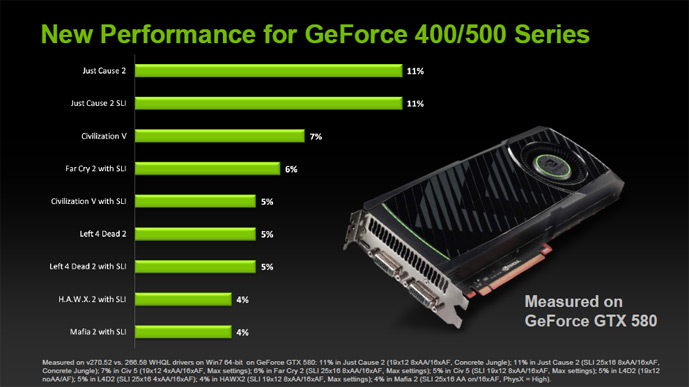 The RX 6950 XT also dropped below $1,000 to $949 from its $1,099 starting MSRP, while the Radeon RX 6900 XT maintains its $699 price tag from its $999 starting MSRP.
The RX 6950 XT also dropped below $1,000 to $949 from its $1,099 starting MSRP, while the Radeon RX 6900 XT maintains its $699 price tag from its $999 starting MSRP.
On the Baidu forums, we can see daily price updates: several high-end cards are now selling for 35-45% below their suggested retail price. RTX 309The 0 Ti, which had an MSRP of 14,999 yuan ($2,173) in China, is currently priced at 7,799 yuan or $1,130. The RTX 3090 and 3080 Ti have faced similar price drops, with the rest of the line currently selling for 10-15% below MSRP. In the AMD camp, aside from the RX 6900 XT, which is down 40% off MSRP, the rest of the lineup is 20-30% below MSRP, a much higher price drop in the mainstream segment than NVIDIA’s.
If you think these are the lowest prices for these cards and now is the time to get a new one, it’s best to wait a little longer as prices continue to drop and with rumors of a potential RTX 40 series launch in a few months you might see that RTX 3090 will be sold at a much lower price and even close to $500.
Graphics card prices have collapsed in China and will continue to decline
With the growth of mining and the frenzy of video card dealers in recent years, graphics card prices have exceeded the psychological expectations of players. A good graphics card has even become a luxury item, but the recent news of graphics card price cuts has rattled many in China.
Recently, graphics card prices in the market have fallen sharply, ending more than two years of price increases. What is the reason for the sharp decline in prices for video cards? How big is the fall? nine0005
In Huaqiangbei, Shenzhen, known as China’s Electronic Technology First Street, many kiosks are equipped with boxes of popular video card models. Vendors have reported that the prices of video cards of various brands have fallen sharply, and current prices are close to a two-year low.
Trader in Huaqiangbei, Shenzhen: Now the price has dropped, and some have dropped about 1,000 yuan in the last month.
Not only did prices drop in offline stores, but so did the prices of graphics cards on online e-commerce sites and second-hand marketplaces. Taking one of the most popular graphics cards, ASUS RTX 3080, as an example, the price previously reached almost 20,000 yuan at the highest level last year, and the current price is less than 7,000 yuan, which is a price drop of almost three times. The market demand and price of video cards are closely related to the prices of virtual currencies such as Ethereum. nine0005
Merchant in Huaqiangbei, Shenzhen: This card used to be used for mining, but now this card cannot be mined.
Industry insiders believe that the fall in graphics card prices is due to the legal status of virtual currency in China. In September 2021, the National Development and Reform Commission of China and other departments jointly issued a «Notice on Correcting Virtual Currency Mining Activities». After that, ten departments, including the People’s Bank of China, issued a document to prevent and eliminate the risks associated with virtual currency, making it clear that commercial activities related to virtual currency are illegal financial activities. As the policy continues to tighten, the price of virtual currency has fallen, the “mining tide” has gradually receded, and graphics card prices have also begun to plummet. nine0005
As the policy continues to tighten, the price of virtual currency has fallen, the “mining tide” has gradually receded, and graphics card prices have also begun to plummet. nine0005
Many speculators were forced to cut prices due to high prices at an early stage, and a large amount of inventory fell into their hands, resulting in large losses. In the future, when the demand for video cards in the market will decrease and the supply will increase, the prices of video cards may still fall.
Different virtual currency systems have different requirements for mining machines, among them, the Ethereum mining machine is based on a video card. Since the second half of 2020, the price of Ethereum has continued to skyrocket, attracting many players to it, and the prices of video cards have risen accordingly, making it difficult to find a card frequently. nine0005
Many speculators took the opportunity to stock up on video cards earlier at low prices and planned to sell them on the market after the price increase. However, since virtual currency is not as profitable, a large number of miners have gone out of business, and graphics card prices have dropped significantly. These players own a lot of inventory and face a dilemma.
However, since virtual currency is not as profitable, a large number of miners have gone out of business, and graphics card prices have dropped significantly. These players own a lot of inventory and face a dilemma.
Merchant in Huaqiangbei, Shenzhen: The price of a video card goes down, but they don’t want to sell, you lose three or four thousand. If everyone is selling, the price drops faster. Slowly release the goods, 100 pieces a day. When they receive a product, they receive it at a premium. nine0005
Although graphics card prices have dropped significantly, the prices of popular graphics cards on the market are still above the official reference price. A 3DCenter report shows that Nvidia and AMD’s graphics card premiums exceeded 80% of the initial MSRP in December last year, and it’s still 25% above the original MSRP.
At the same time, on the demand side, an upgrade of the Ethereum blockchain system is expected in the second quarter of this year, when the Ethereum consensus mechanism will be changed from Proof of Work to Proof of Stake, which means node operators only need to stake a certain amount.
